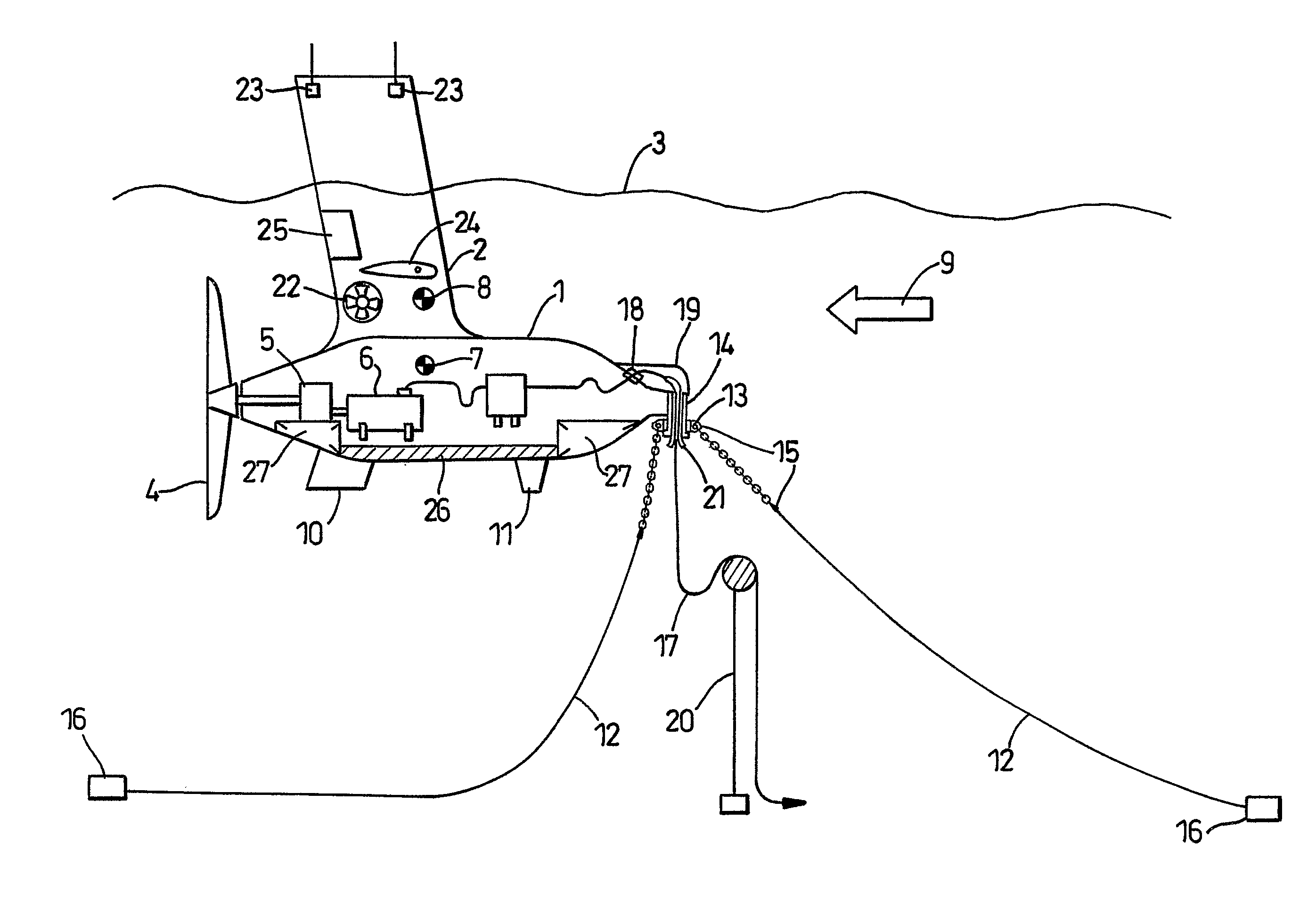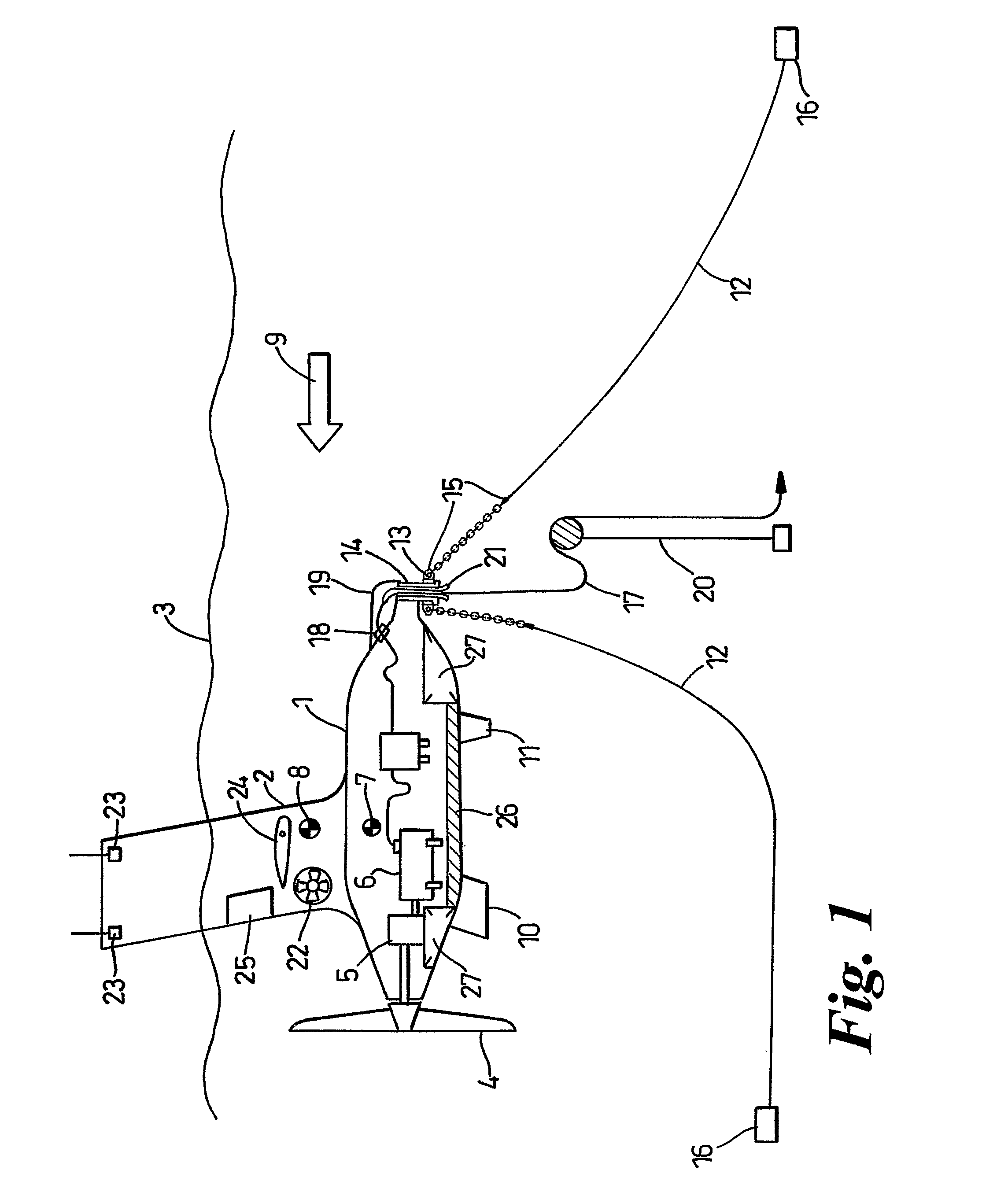Floating Apparatus for Deploying in Marine Current for Gaining Energy
- Summary
- Abstract
- Description
- Claims
- Application Information
AI Technical Summary
Benefits of technology
Problems solved by technology
Method used
Image
Examples
Embodiment Construction
[0032] The embodiment of the invention shown in FIGS. 1, 3 and 4 is a mono-hull variant with a single vertical strut. The device consists of a submerged nacelle body (1) with a substantially vertical strut (2) that pierces the water surface (3). The strut piercing the water surface is of small waterplane area such that it does not attract large changes in buoyancy with change in wave elevation. The submerged body (1) supports a hydro turbine (4) which drives through a step-up gearbox (5) which is coupled to a generator (6) for extracting power from marine currents. The geometry of the submerged nacelle body plus surface piercing strut is arranged such that the still water centre of gravity [CoG] (7) aligns longitudinally with the centre of buoyancy [CoB] (8) of the device taking account of the additional trimming moment induced by the mooring system and that the CoB is vertically above the CoG thus ensuring the positive stability of the device.
[0033] The surface piercing strut (2) ...
PUM
 Login to View More
Login to View More Abstract
Description
Claims
Application Information
 Login to View More
Login to View More - R&D
- Intellectual Property
- Life Sciences
- Materials
- Tech Scout
- Unparalleled Data Quality
- Higher Quality Content
- 60% Fewer Hallucinations
Browse by: Latest US Patents, China's latest patents, Technical Efficacy Thesaurus, Application Domain, Technology Topic, Popular Technical Reports.
© 2025 PatSnap. All rights reserved.Legal|Privacy policy|Modern Slavery Act Transparency Statement|Sitemap|About US| Contact US: help@patsnap.com



